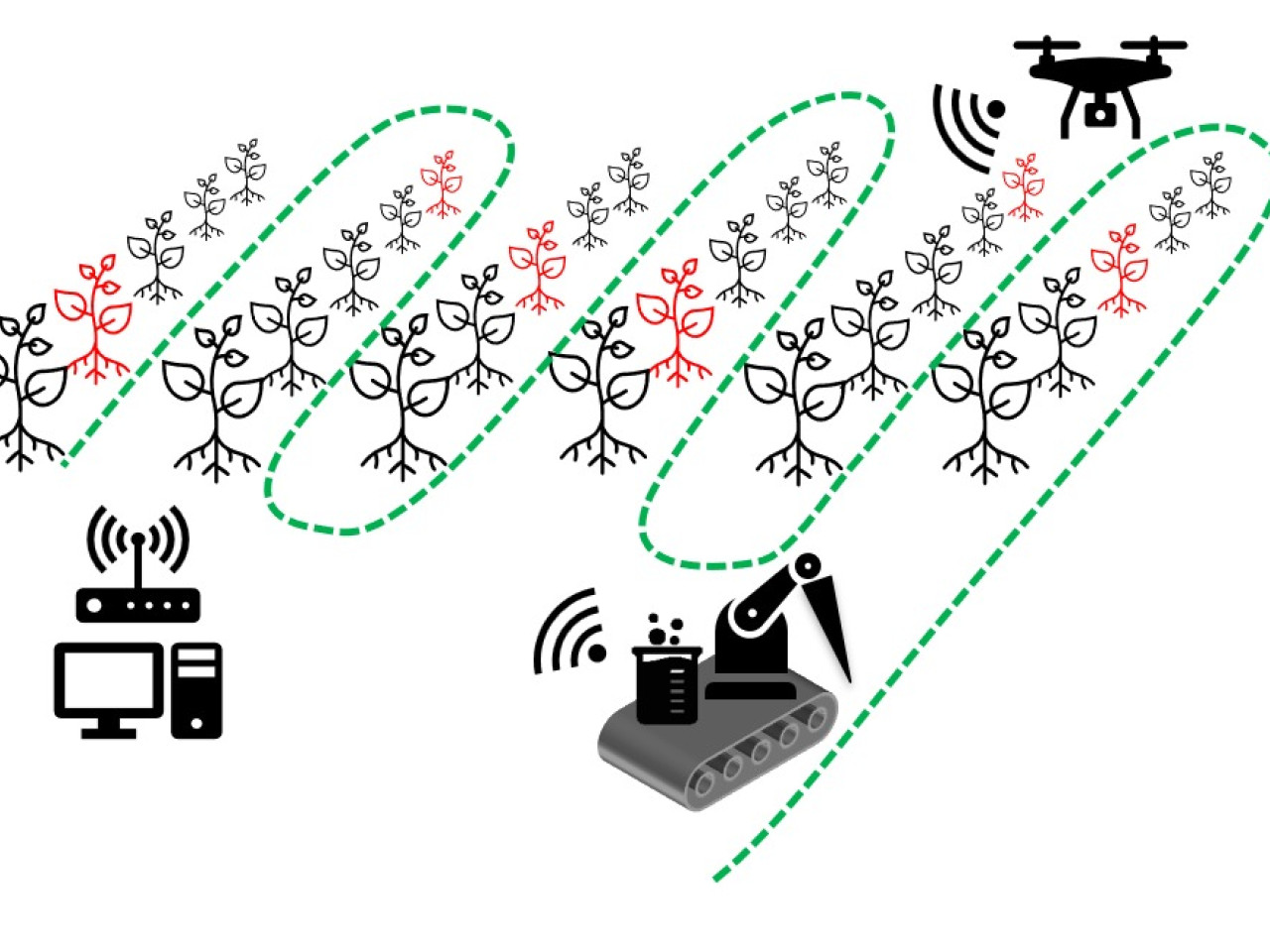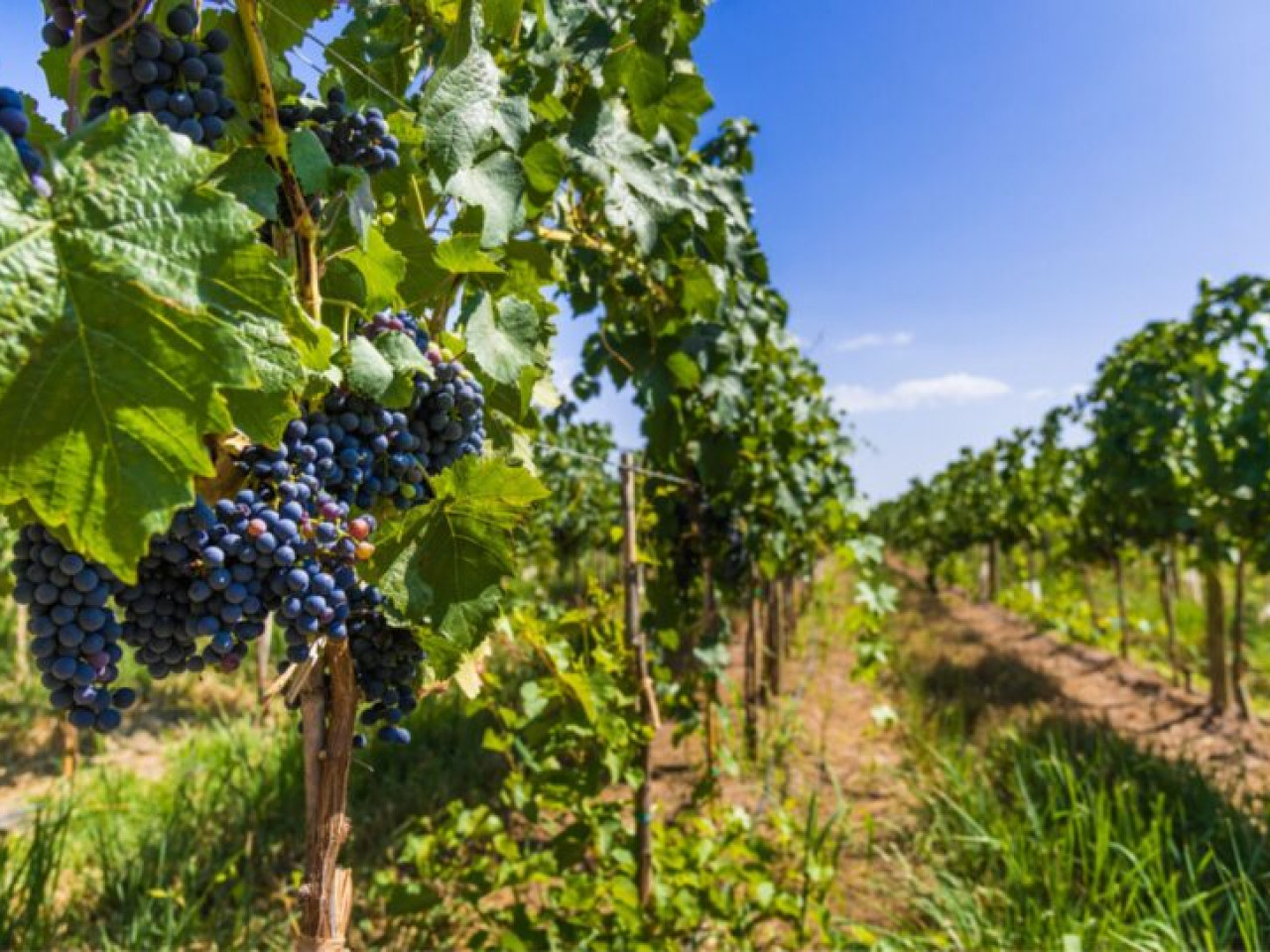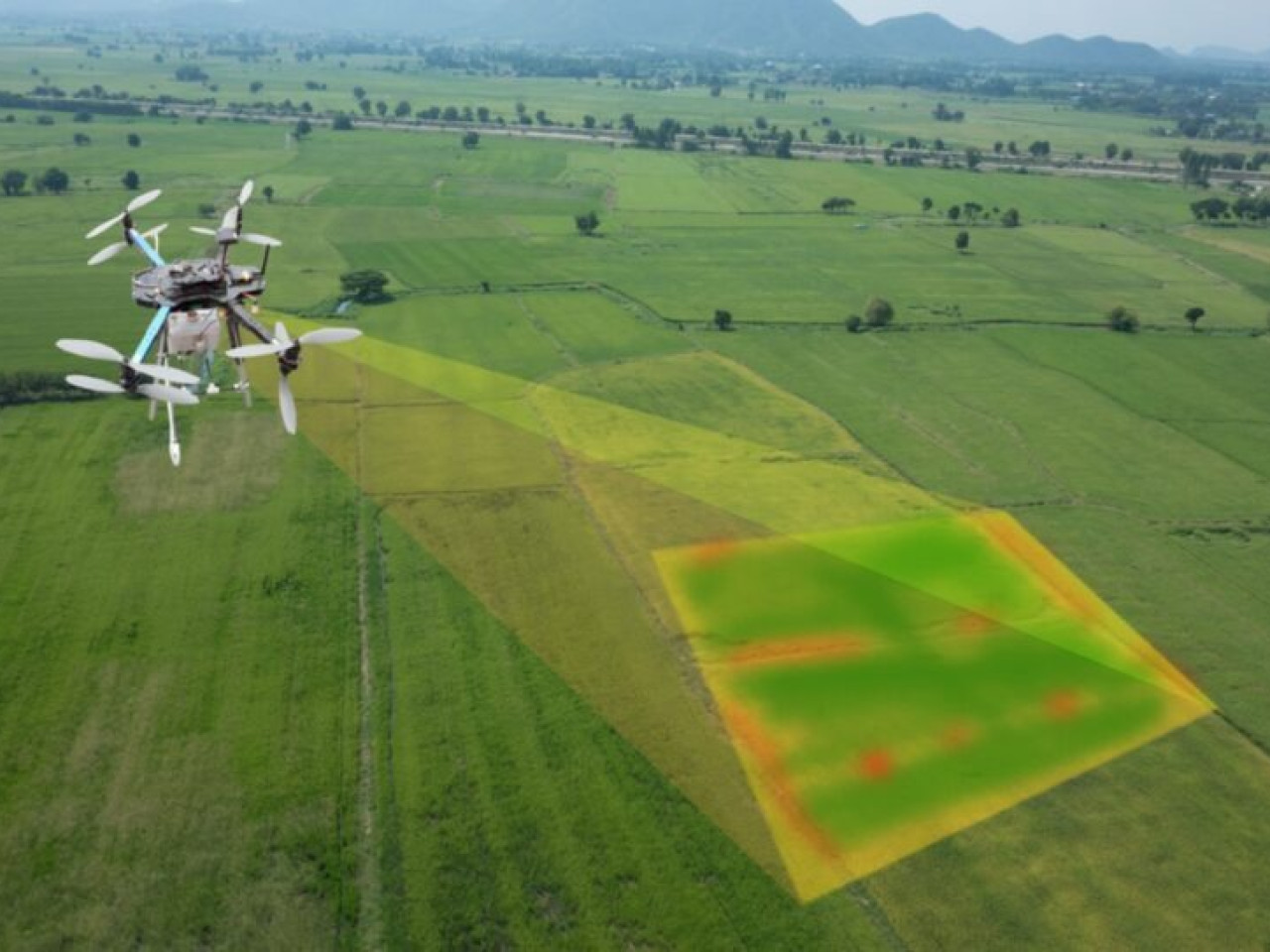AGRARIAN aims to develop a prototype of an integrated system composed of a mobile ground unit and one or more UAV (Unmanned aerial vehicles) units. These units will coordinate to acquire data relating to soil conditions, environmental parameters, and crop vegetation indexes in order to obtain a precise mapping of the entire area cultivated as a vineyard. The project has three main objectives. First, the development of a system useful to classify the health status of the crop, which allows an early warning of biotic adversities and consequently a timely and precise intervention. The second objective is the development of a parallel system for the prediction of production yield. The third objective is to build a model that provides a history of the evolution of soil conditions in the vineyard that can also integrate Big Data platforms already developed in other contexts.
 Integrated monitoring system scheme
Integrated monitoring system scheme
Precision farming has recently received a significant boost, thanks to the availability of new advanced sensors, artificial intelligence (AI) techniques that allow the development of predictive models, and autonomous or semi-autonomous robots at relatively low costs. AGRARIAN aims to change the monitoring system from static to mobile sensors, improving data collection and rationalizing resources. This approach will drastically reduce the high installation and maintenance costs typical of traditional fixed sensors, favoring the introduction of precision farming techniques also in medium and small production realities. The quality of the punctual data collected will be improved compared to fixed systems in terms of sensitivity, reproducibility, and significance. Furthermore, the aggregated in situ and real-time analysis of soil, environmental parameters, and vegetation indexes will allow for the early recognition of localized stress conditions of the crop and the activation of targeted and immediate countermeasures. It will also allow the integration of data present in platforms already available to support predictive models of the growth cycle and the analysis of production yield.
The development of an optimized agricultural system is essential for the sustainability of the sector, which is affected by climate change. Rising temperatures and droughts require the exploitation of digitalization in agriculture to optimize the rationalization of water, specific chemical agents (fertilizers and plant protection products) and to act promptly in the field, through the development of specific precision agriculture models. The use of more flexible machines, with reduced size and weight, leads to less soil compaction and the advantage of flexible maintenance without production stops. Current applications focus on the automation of processes but neglect monitoring, which would be promoted using drones. The major limitation today is flight autonomy and limited load capacity of drones, which however guarantee much greater mapping frequencies than satellite solutions and can easily change points of view. Finally, the integrated approach to data collection allows obtaining more precise and strategic information as it is processed by advanced data management platforms.
Fixed sensors currently allow only average aggregate data and not punctual data for each cultivated area, unlike what happens with aerial or satellite surveys. Furthermore, there is a lack of knowledge of the evolution of the soil over time. In addition, soils suffer from a decline in fertility over time and accumulation of harmful substances due to the intensive use of pesticides. The correction of these two factors allows not only applications in any open-field crop but also the creation of a system for monitoring and managing periods of drought that contributes to the decline in production.
 project application example: vine variety for wine production
project application example: vine variety for wine production
The case study is the wine supply chain, of great importance for the agricultural sector of Emilia Romagna, which covers 15% of Italian production. AGRARIAN aims to develop a prototype of a heterogeneous system composed of a mobile ground unit and one or more aerial units (UAVs) for the acquisition of data relating to soil conditions, environmental parameters, vegetation indexes of the reference crop in order to obtain a precise mapping of the entire area cultivated with vineyards.
Agrarian has a highly multidisciplinary character. Computer, digital, and robotics knowledge will be combined with specific agronomic skills and knowledge to monitor the health status of vines. The skills in the fields of robotics, image analysis, and sensory fusion will be applied to monitoring parameters of the different varieties (cultivars) of the viticultural supply chain. The first expected result is the development of algorithms for the coordinated movement of the components of the heterogeneous system specific to the vines. In parallel, an acquisition and processing system of aerial images based on vegetation indices will be developed focusing on early warning of the spread of diseases impacting the sector (e.g., flavescence dorée or esca disease). Finally, a portable mechatronic system for soil sampling will be developed, equipped with dedicated sensors for the analysis of chemical-physical properties of the soil, environmental and vegetative indices. These tools will be integrated with algorithms developed through machine learning to determine the specific health status of vines. Predictive models will also be developed to rationalize water use, fertilizers and agrochemicals for vines.
UNIMORE-INTERMECH-MO. RE.
CIDEA, University of Parma
Ri.Nova Società Cooperativa-CRPV LAB
CRIT srl
AeroDron
Gruppo Caviro
Cantine Riunite & CIV S. C. Agr.
The main expected results are validated software and hardware solutions to assist farmers in crop protection. In the long term, AGRARIAN will offer farmers the opportunity to improve production yield, effectiveness, and sustainability of their work, compared to current technologies. The third-party technologies involved will be distributed to the B2B market.
 example of crop monitoring using a UAV
example of crop monitoring using a UAV

